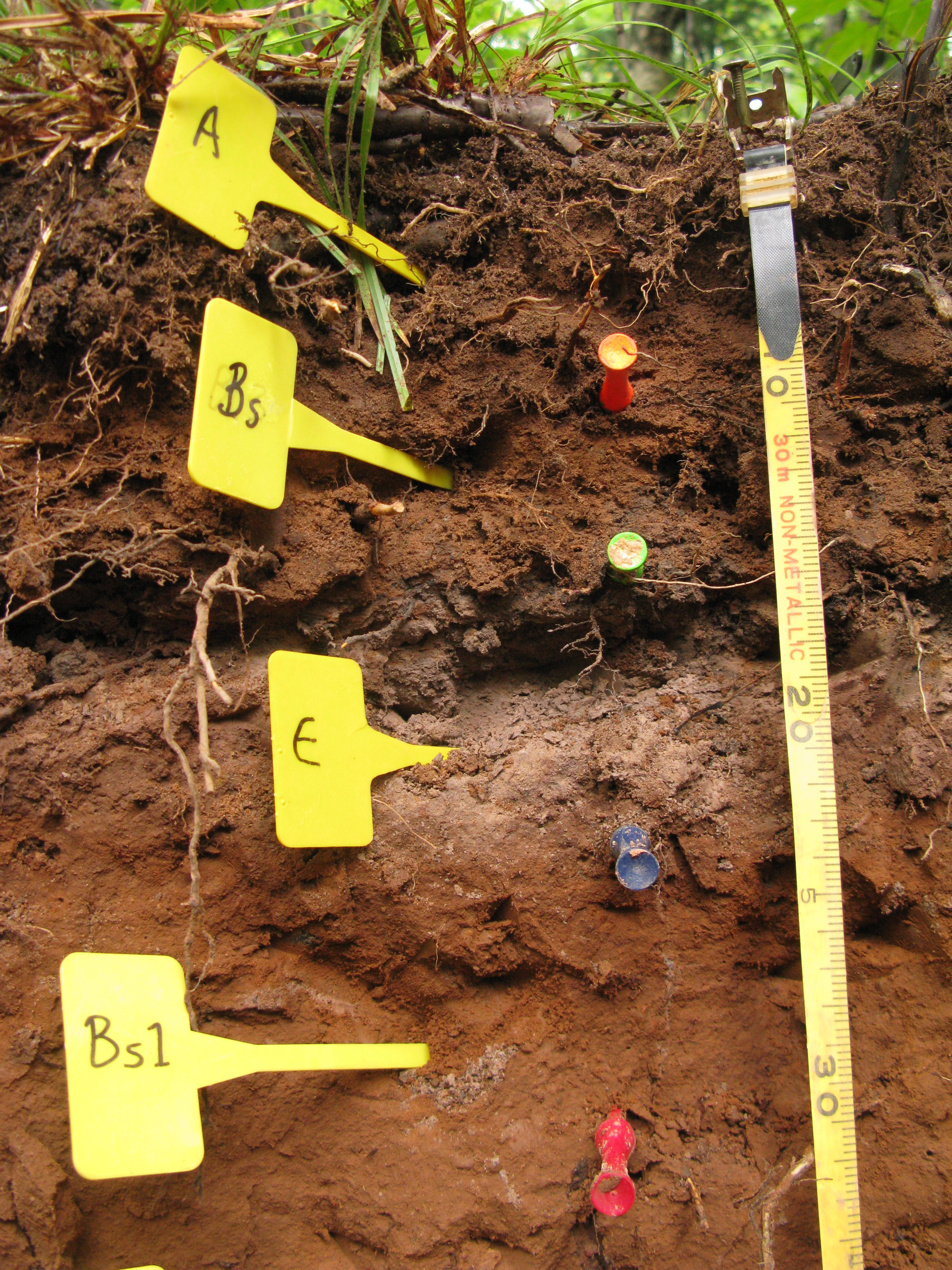
Digging into Soil Organic Matter • News Service • Iowa State University
Data for the study came from soil profiles, like this one, collected by the National Ecological Observatory Network. Bigger picture. Photo courtesy of National Network of Ecological Observatories, Battelle.
AMES, Iowa – A new study by scientists at Iowa State University sheds light on the mystery of how soil organic matter forms in a wide range of ecosystems.
The study, published in the academic journal Nature Geoscience, drew on archives of soil data from across North America to find patterns in the chemical composition of organic matter. The analysis will help scientists understand the “rules” that govern the formation of soil organic matter and better predict the composition of soils, said Steven Hall, lead author and assistant professor of ecology, evolution and biology of organisms.
Soil organic matter is the organic component of soils, mainly composed of residues left by dead plants and microorganisms. Understanding how soils break down or retain organic matter is important because organic matter plays a central role in the type of services soils can provide, such as whether they make good agricultural soils or whether they can sequester carbon to slow climate change.
“If you pick up dirt and it’s dark in color, a lot of people would say it’s because of organic matter,” Hall said. “But what it really is has been debated for more than 100 years. With this study, we wanted to answer the questions of whether organic matter is chemically similar in all environments or whether it varies from predictably from one environment to another.
To answer these questions, the researchers turned to the National Ecological Observatory Network, which has compiled archives of various soil types from a wide range of environments in North America. These samples included soils taken from the tundra, tropical rainforests, deserts, grasslands and beyond. They supplemented the data with soil samples taken from other sites. These soils underwent a technique called nuclear magnetic resonance spectroscopy in the laboratories of Baylor University. The technique allowed researchers to analyze the chemistry of carbon atoms in the soil.
The results that emerged from the analysis revealed patterns that held true for soils across climates.
“Perhaps the most robust finding is that there seem to be really consistent trade-offs in the chemistry of organic matter,” Hall said. “If you have more of certain compounds, those samples always contain less of other compounds.”
For example, Hall said researchers looked closely at lignin, a compound in many plants that is a key component of wood. The study found that lignin-rich soils generally contained less protein, and vice versa. They also found patterns that appear to match climate and mineral content, Hall said.
Understanding these patterns, or the rules for how and why organic matter forms and persists in soil, will help scientists predict how soils in various ecosystems store carbon, Hall said. Carbon can contribute to climate change when released from the soil into the atmosphere as a greenhouse gas. But a better understanding of the types of soil carbon that exist in different environments can paint a clearer picture of how soil carbon may affect climate in the future, and vice versa.
“The idea is to give us a conceptual model to predict differences in organic matter between ecosystems and understand why that organic matter might be present,” Hall said.

Comments are closed.